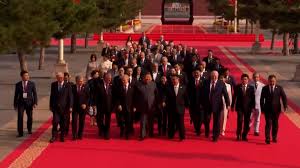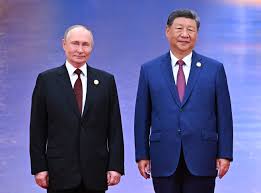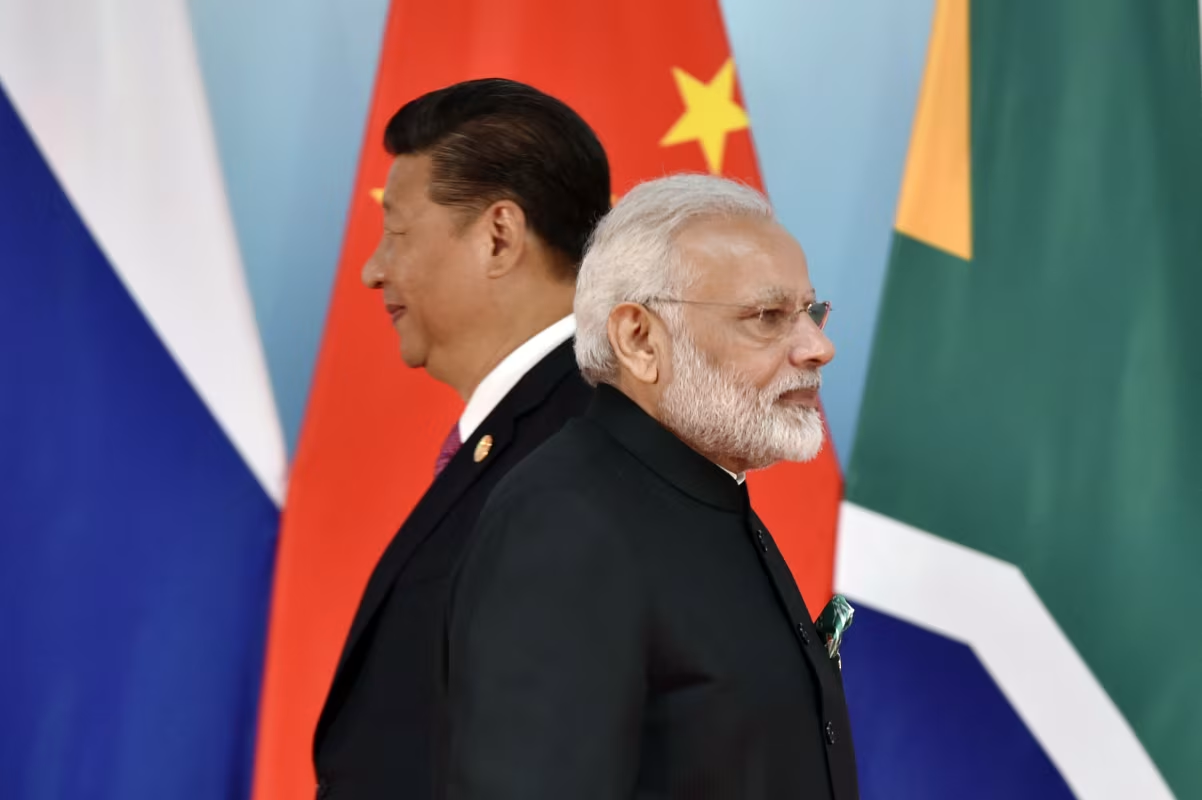
Modi’s Trip to China: A Tactical Shift
- Although better ties with Beijing are not completely unusual, experts claim Trump’s “America First” approach has accelerated India-China rapprochement, strengthening New Delhi’s necessity for strategic
The U.S.–India Nexus: From Meeting to Conflict
- In early February 2025, Modi traveled to Washington for a meeting with President Trump.
- There, both leaders revealed “Mission 500”—a mutual goal to increase bilateral trade to $500 billion by 2030—along with defense cooperation pacts.
- However, as the year went on, the radiance of that peak diminished. Trump’s tariffs, presented as a penalty for India’s continued import of Russian oil, have faced significant opposition. India dismissed U.S. demands to alter its agriculture and dairy industries, labeling the tariffs as “unjustified” and highlighting its energy requirements.
- Domestic political leaders, such as Congress President Mallikarjun Kharge, condemned the action as a “foreign policy failure” and berated Modi’s seemingly insufficient reaction.
- Critics caution that the tariffs might destabilize the Quad alliance (U.S., India, Japan, Australia), hindering regional collaboration and providing China with a strategic advantage.
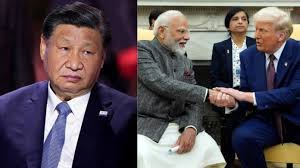
Why Modi Pursues Equilibrium, Not Disruption
- Analysts warn that Modi’s trip to China does not signify a shift from the U.S., but is instead a restatement of New Delhi’s longstanding approach of strategic independence. India must sustain operational relationships with both key influences: an essential democratic ally in the U.S. and a powerful neighbor in China.
- In terms of trade, China ranks as India’s second-largest partner, with bilateral transactions surpassing $125 billion in FY25, while the relationship between the U.S. and India remains crucial for regional stability.
India’s Prime Minister Narendra Modi’s rare China visit, coming just after Donald Trump’s new U.S. tariffs on Indian exports, highlights the shifting dynamics of U.S.–India relations, India–China ties, and the Quad alliance. Analysts warn that Trump’s trade war with India over Russian oil imports could weaken strategic cooperation and give Beijing an opening, while Modi emphasizes strategic autonomy to balance both Washington and Beijing. The U.S.–India diplomatic crisis of 2025, rising tariff disputes, and potential geopolitical realignment in Asia are now central questions shaping the future of global trade, defense partnerships, and regional stability.- Should Washington Worry?
- The brief response: Yes—but not regarding a complete realignment.
- Trump’s tariffs threaten to reverse years of endeavors to establish India as a democratic counterbalance to China in Asia. Experts such as Fareed Zakaria caution that this signifies “the most severe crisis in twenty years” of U.S.–India relations, possibly bringing New Delhi nearer to the China–Russia alliance.
- Experts emphasize that the core of the U.S.–India relationship is robust—anchored in common democratic principles, defense connections, and technological collaboration. The plea is for intelligent diplomacy and renewed engagement, not fear-fueled accusations.
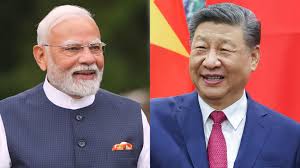
Focusing on the Future
- As Modi travels to the SCO summit for discussions with Chinese President Xi Jinping, the images will be important.
- Could this indicate a stagnation of the Quad alliance? Or might it be seen as New Delhi reinforcing a meticulously designed, multifaceted foreign policy?
- At the same time, tensions could diminish if Trump and Modi reconvene at the UN this September—providing an opportunity to readjust, address trade barriers, and strengthen the strategic relationship.
Final Thoughts
- Washington ought to view this as a cautionary signal—not of treachery, but of tactical realignment
- US President Donald Trump and Indian Prime Minister Narendra Modi shake hands at the White House in Washington, D.C., on February 13, 2025. Kevin Lamarque/Reuters
- Following a meeting between Chinese Foreign Minister Wang Yi and Prime Minister Modi in New Delhi last week, both sides recognized the recent improvements in their strained relationship.
- “India-China relations have made steady progress guided by respect for each other’s interests and sensitivities,” the Indian leader said. “Stable, predictable, constructive ties between India and China will contribute significantly to regional as well as global peace and prosperity.”
The view from Beijing, according to Yun Sun, director of the China Program at the Stimson Center think tank in Washington, is that “this detente was definitely started by Trump.”
- “India is no longer able to pretend that it still has strong support from (Washington),” Sun said. Therefore, Beijing’s view is that because the US has “dialed back” India has to “recalibrate its foreign policy and improve its relationship with China.”
But analysts say the summit is unlikely to usher in a fundamental realignment.
- “The United States remains (India’s) most important partner in the world, but China is our largest neighbor,” Kewalramani said. “We have to live with it.”
From brotherhood to rivalry
- The trajectory of India-China relations has evolved from one of post-colonial brotherhood to modern-day strategic rivalry.
- India was one of the first countries to establish diplomatic relations with the People’s Republic of China in 1950, with that decade characterized by a shared vision of Asian solidarity. That nascent friendship was, however, shattered by the 1962 Sino-Indian War, a brief but brutal conflict that established a legacy of deep mistrust and an unresolved border dispute that remains the relationship’s festering wound.
- In the decades that followed, the countries’ leaders took steps to build economic ties that saw bilateral trade grow, despite ongoing tensions at their shared border. But the deadly 2020 Galwan Valley clashes – which left at least 20 Indian and four Chinese soldiers dead – violently upended this balance.
Indian officers occupying a fort on the Ladakh border during the war between India and China in 1962. Hulton Deutsch/Corbis Historical/Getty Images
- There has been a gradual normalization of ties between India and China after Modi and Xi met on the sidelines of the BRICS summit in Russia last October. The two sides agreed to restart direct flights cancelled since the Covid-19 pandemic, Beijing recently agreed to reopen two pilgrimage sites in western Tibet to Indians for the first time in five years, and both started re-issuing tourist visas for each other’s citizens.
A balancing act
- India’s recalibration of ties with China is a textbook application of its policy of strategic autonomy, which prioritizes national interests over rigid bloc allegiance.
- This engagement with a China-dominated bloc stands in stark contrast to India’s deepening ties with the Quad – a security grouping with the US, Japan, and Australia – that is widely seen as a democratic counterweight to China’s growing influence in the Indian Ocean.
- Indian Prime Minister Narendra Modi meets with visiting Chinese Foreign Minister Wang Yi in New Delhi, India on August 19, 2025. Javed Dar/Xinhua/Sipa
- “While both sides know there are structural challenges and this relationship will remain difficult, both sides realize that a deterioration to the extent that it happened is in neither’s interest,” he said.
The path to stability
- India’s strategic recalibration toward China is rooted less in a softening security posture and more in economic necessity.
- Last year, China was India’s second-largest trading partner after the US, with bilateral trade reaching $118 billion, according to data from India’s department of commerce. India depends on China not just for finished goods like electronics, but for the essential intermediate products and raw materials that fuel its own industries.
Yet, this economic entanglement exists under the shadow of a tense military reality.
- Any talks between Modi and Xi would be complicated by the tens of thousands of troops still deployed at their disputed Himalayan border and this unresolved conflict remains the primary barrier to rebuilding confidence. Last week, the two sides agreed to 10 points of consensus on their border issue, including maintaining “peace and tranquility,” according to a statement from China’s Ministry of Foreign Affairs.
Armoured vehicles of the Indian army at a military camp in Eastern Ladakh, on May 19, 2024. Tauseef Mustafa/AFP/Getty Images
- The major test, she said, is whether the rhetoric from the two leaders translates to de-escalation on the ground, something that has failed before.
- The future, said Asia Society’s Aamer, will bring “perhaps a more stable relationship, where competition isn’t necessarily over, but conflict is at bay.”

